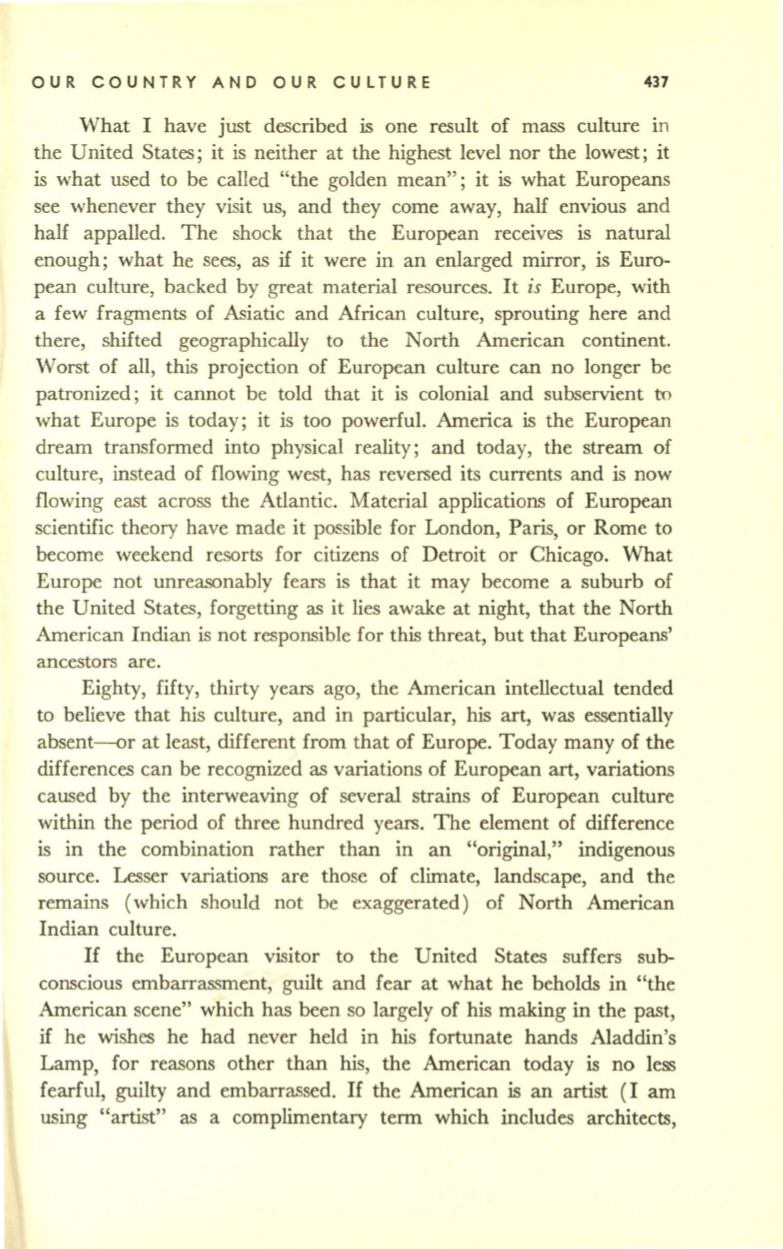
OUR COUNTRY AND OUR CULTURE
437
What I have just described is one result of mass culture in
the United States; it is neither at the highest level nor the lowest; it
is what used to be called "the golden mean"; it is what Europeans
see whenever they visit us, and they come away, half envious and
half appalled. The shock that the European receives is natural
enough; what he sees, as if it were in an enlarged mirror, is Euro–
pean culture, backed by great material resources. It
is
Europe, with
a few fragments of Asiatic and African culture, sprouting here and
there, shifted geographically to the North American continent.
Worst of all, this projection of European culture can no longer be
patronized; it cannot be told that it is colonial and subservient
to
what Europe is today;
it
is too powerful. America is the European
dream transformed into physical reality; and today, the stream of
culture, instead of flowing west, has reversed its currents and is now
flowing east across the Atlantic. Material applications of European
scientific theory have made it possible for London, Paris, or Rome to
become weekend resorts for citizens of Detroit or Chicago. What
Europe not unreasonably fears is that it may become a suburb of
the United States, forgetting as it lies awake at night, that the North
American Indian is not responsible for this threat, but that Europeans'
ancestors are.
Eighty, fifty, thirty years ago, the American intellectual tended
to believe that his culture, and in particular, his art, was essentially
absent--or at least, different from that of Europe. Today many of the
differences can be recognized as variations of European art, variations
caused by the interweaving of several strains of European culture
within the period of three hundred years. The element of difference
is in the combination rather than in an "original," indigenous
source. Lesser variations are those of climate, landscape, and the
remains (which should not be exaggerated) of North American
Indian culture.
If
the European visitor to the United States suffers sub–
conscious embarrassment, guilt and fear at what he beholds in "the
American scene" which has been so largely of his making in the past,
if he wishes he had never held in his fortunate hands Aladdin's
Lamp, for reasons other than his, the American today is no less
fearful, guilty and embarrassed.
If
the American is an artist (I am
using "artist" as a complimentary term which includes architects,


